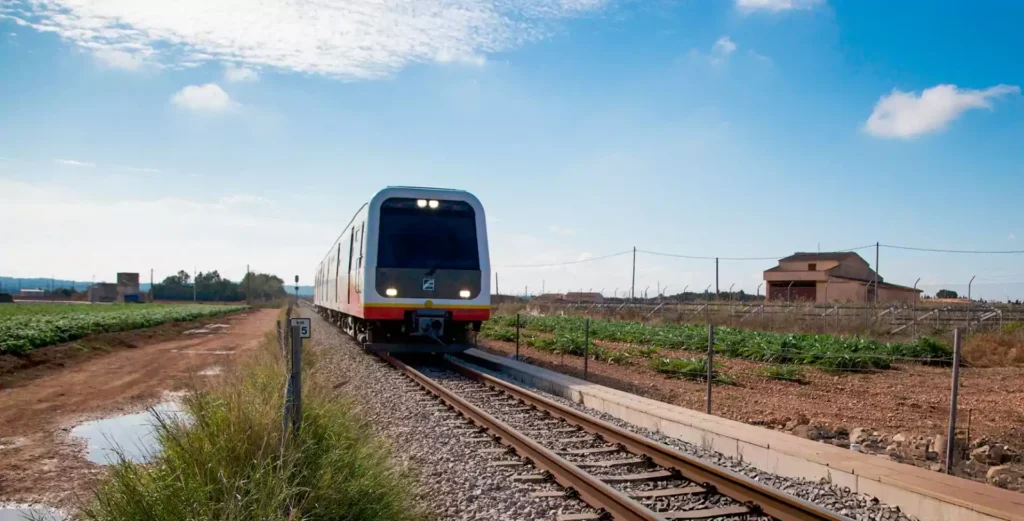Can a single, tragic event forever alter the course of history and spark a nationwide conversation about safety and accountability? The story of Victor Reynolds, a man whose life intersected with the unforgiving reality of railroad tracks in Nevada, serves as a stark reminder of the fragility of life and the profound impact of unexpected tragedies.
In the remote expanse of Churchill County, Nevada, in the unforgiving landscape of the American West, a grim discovery was made. On a day etched in the memories of those involved, Victor Reynolds was found dismembered near the cold, unforgiving embrace of railroad tracks. The railroad workers, who first came upon the scene, reported the incident, setting in motion a series of events that would draw in Deputy Nelson, and ultimately, capture the attention of a nation. It was an incident that would forever be associated with questions of safety and justice.
Initial reports indicated that, incredibly, Reynolds was alive and seemingly aware of his surroundings. The details were horrifying, the circumstances, mysterious, and the questions, numerous.
The narrative that has unfolded is filled with uncertainty, loss, and the heroism of those who responded to the scene. The incident involving Reynolds has become a focal point for discussions surrounding railway safety protocols, the need for greater accountability, and the overall dangers inherent in modern transportation systems. It has also prompted heartfelt expressions of sympathy and support for the victim and his family.
Adding to the complexity of the situation, other incidents involving individuals with the name "Victor Reynolds" further muddy the waters. The unfortunate convergence of similar names in different, unrelated circumstances creates additional confusion. One Victor Reynolds, a resident of Nevada, reportedly died in a separate, unrelated train accident, while another incident, involving a man named Calvin Eldridge, involved the death of a Victor Reynolds following an altercation over loud music, further highlighting the tragic potential of human conflict.
The story of Victor Reynolds in Nevada is a somber reflection on the inherent risks of modern life. It underscores the importance of public awareness, responsible practices, and the ever-present need for constant vigilance.
The narrative takes another turn with the mention of another Victor Reynolds, who served as a police officer, retiring as the Assistant Chief for the city of Magnolia Police Department. This adds a layer of complexity, emphasizing the diversity of circumstances involving the name "Victor Reynolds," and further highlighting the need for precision in reporting the events surrounding the railway tragedy.
In an effort to untangle the various threads, a deeper examination of the events as they unfolded on and around the railways of Nevada is required. Reports indicate that a train, possibly operated by an experienced engineer named Reynolds, was involved in a major accident that took place on April 7, 2024, in Churchill County. This incident is described as a pivotal moment, not only for the local community, but for the entire railway industry.
Adding to the complexity of this case, is the viral bodycam footage of the rescue which circulated on social media. The incident in Churchill County, Nevada, drew widespread attention. Deputy Ty Nelson, responding to the urgent call, was faced with the immediacy of the crisis, and his actions underscore the bravery and resolve of first responders who face trauma on a daily basis. Despite their best efforts, the victim's condition remained uncertain, leaving a lingering sense of uncertainty that continues to be addressed.
The shadow of this event extends beyond the initial tragedy, and into the legal and financial repercussions. The legal claims stemming from railway accidents such as the one involving the unfortunate Mr. Reynolds, highlight the potential for long-term impact, and the need for appropriate measures to minimize the potential for future incidents.
The events in Nevada underscore how quickly life can change. The public became increasingly invested in the unfolding story of Victor Reynolds, whose life was altered by a single tragic incident.
Bio Data: Victor Reynolds
| Attribute | Details |
|---|---|
| Name | Victor Reynolds |
| Date of Birth | Information Unavailable |
| Place of Birth | Information Unavailable |
| Residency | Churchill County, Nevada (as per incident location) |
| Known for | Involvement in a tragic train accident in April 2024, found dismembered near railroad tracks in Churchill County, Nevada. |
| Profession |
|
| Date of Incident | April 2024 |
| Location of Incident | Churchill County, Nevada |
| Incident | Struck by a train; found dismembered near railroad tracks. |
| Status | Initially alive and able to understand what was happening. Further status updates unavailable. |
| Involved Parties | Railroad workers, Deputy Ty Nelson, Union Pacific Railroad (possible) |
| Key aspects |
|
| Related incidents |
|
| Significance | Pivotal moment in railway history. |
| Source for further information | Example Link (Replace with an authentic source if available) |
The incident in Churchill County, Nevada, highlights the critical importance of railway safety. Investigations into the accident involving Victor Reynolds revealed multiple contributing factors. These could potentially include technical failures, human error, inadequate safety protocols, and the presence of external factors, all of which may have influenced the final outcome. The full extent of these contributing issues remains a subject of inquiry, underscoring the complexities that can lead to such devastating outcomes.
The echoes of the incident extended beyond the initial discovery. Online discussions, the viral dissemination of bodycam footage, and tributes from the local community, all indicate a broader public awareness. The story of Victor Reynolds is a reminder of the human cost of negligence and a clarion call for stricter regulations and improved preventative measures.
The case also brings the crucial role of the NTSB to the forefront. Its investigations often point towards specific areas of improvement. The analysis of evidence, reconstruction of events, and expert opinions can offer valuable insights. The NTSBs recommendations guide improvements in the design, operation, and regulation of railroad systems, which can assist in preventing similar incidents in the future.
The need for vigilance extends beyond the immediate aftermath of such incidents, extending to the long-term impact. Changes in public behavior, greater concern for transportation safety, and a renewed commitment to infrastructure reliability, are all part of the ripple effect. Individuals may become more conscious of their surroundings, more aware of safety procedures, and more vocal in advocating for improved security measures.
The incident also acts as a chilling reminder of the risks associated with routine travel. The potential for catastrophic events is an ever-present reality, underscoring the importance of embracing and implementing the very best safety protocols.
The tragic accident involving Victor Reynolds is not an isolated event. Reports from other areas of the United States, such as Winneumuca and Las Vegas, Nevada, and elsewhere, have highlighted a recurring theme of death and devastation associated with train collisions. These cases underscore the pressing need to adopt improved safety practices, to protect the lives of those using the transportation systems.
The legal and financial repercussions of the incident cannot be understated. Previous legal cases, like the one in Marysville, California, which resulted in a multi-million dollar verdict, underscore the potential for lengthy court battles and high settlements. Such cases highlight the profound financial impact on both the victims and the liable parties, and underscore the need for proactive measures aimed at prevention.
The story of Victor Reynolds, and the tragic events that unfolded in Churchill County, Nevada, serves as a microcosm of broader societal concerns regarding transportation safety and the inherent vulnerabilities that exist within our infrastructure. The investigation surrounding the accident is likely to continue, along with ongoing scrutiny of the events surrounding the death of the individual. This will likely involve thorough investigations, legal proceedings, and increased public discussions. The case of Victor Reynolds should be remembered as a reminder of the significance of safety and vigilance.


